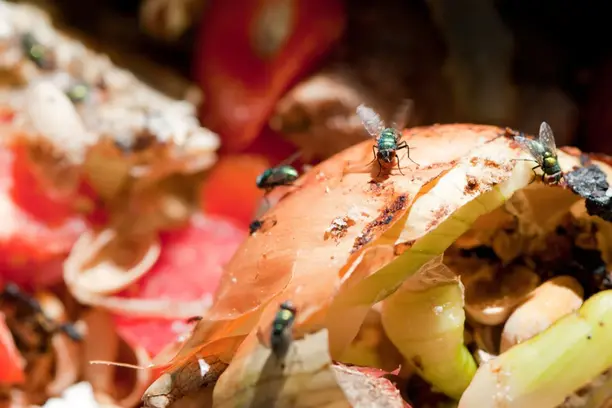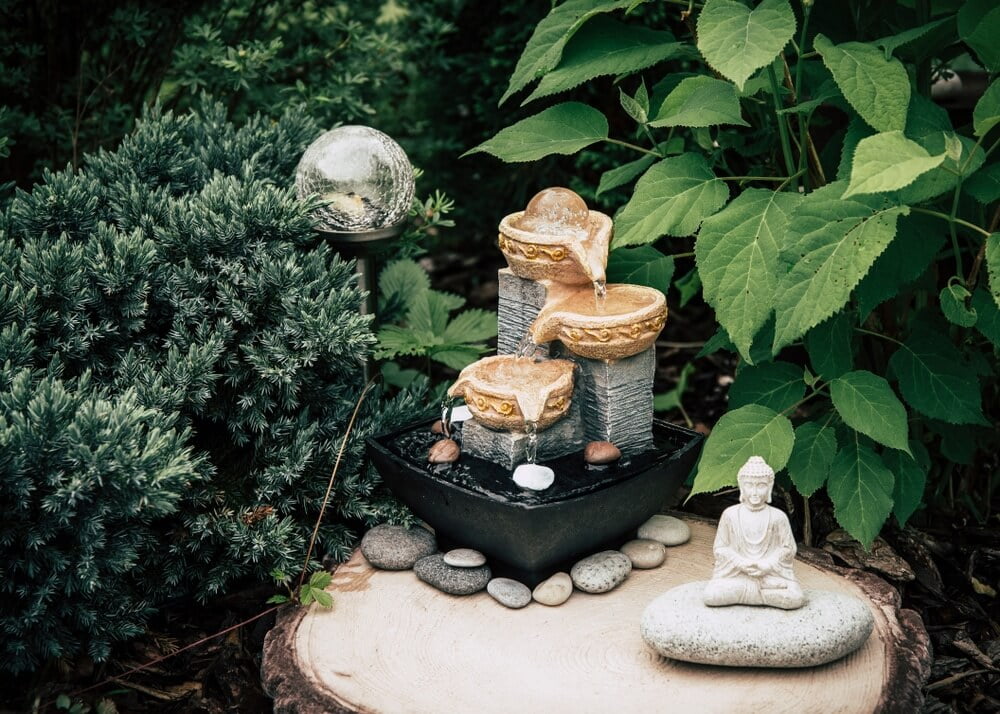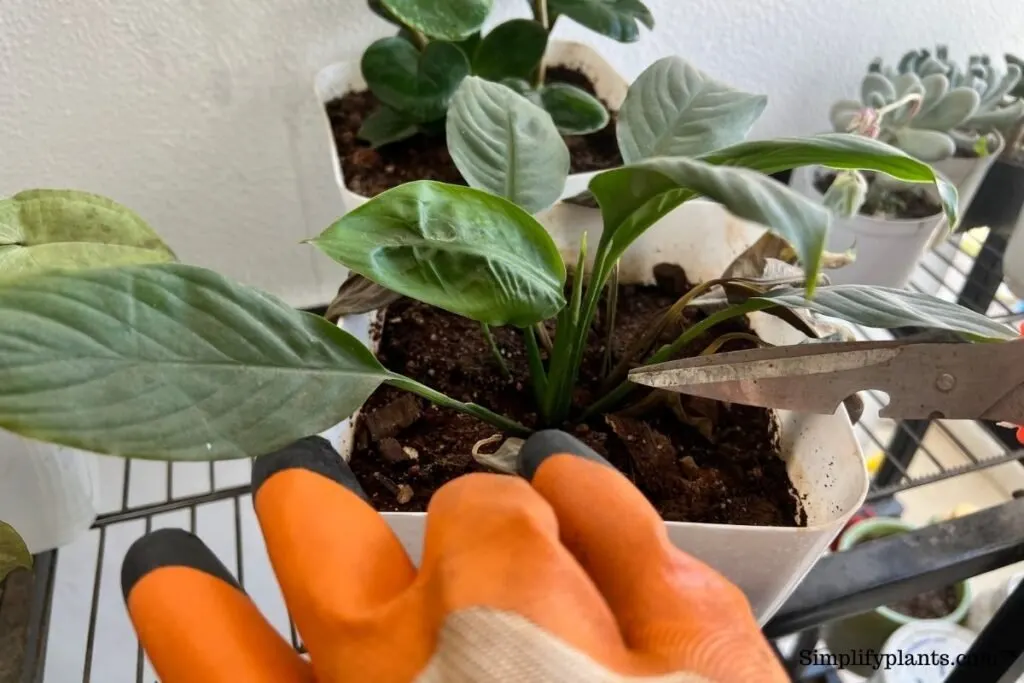Lemon trees lose leaves because of various causes. Common causes of leaf loss in citrus trees include nutrient deficiency, too much or insufficient sunlight, watering problems, pest attacks, and diseases.
While most of the damage is reversible, it is better to deal with the factors causing leaf loss in your plants early on to maintain their health and growth rate.
Why is my lemon tree losing leaves?
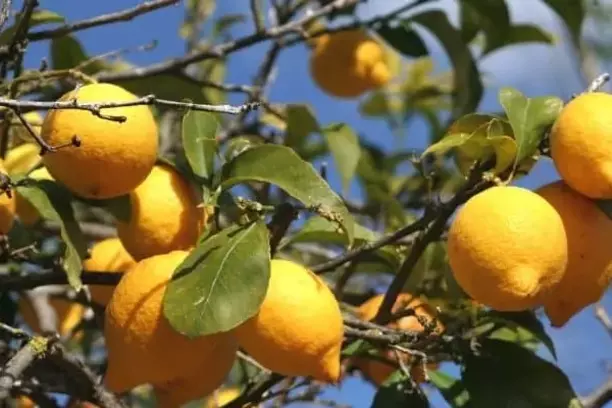
Healthy lemon trees often shed their leaves during winter in response to the cold. You might also notice some species (such as the Meyer lemon tree) shedding a few leaves during the flowering season. However, you can expect trees to regain their foliage with proper care.
Here’s what could be causing your lemon tree to lose its leaves:
Overwatering or underwatering
Watering issues are a common cause of leaf loss in lemon trees. Too much water is detrimental to a plant’s health as excess moisture inhibits a plant’s ability to take in nutrients from the soil.
RELATED: HOW TO REVIVE OVERWATERED LEMON TREE
The symptoms of an overwatered lemon tree include falling leaves, yellowing leaves, and constantly wet and soggy soil. You can also tell if your plant receives inadequate water by checking for curling leaves, dry ground, and early leaf fall.
Overwatering has severe consequences for lemon trees since the wet soil promotes the growth of fungi and might cause root rot and other diseases in your citrus trees. Always ensure that you use an ideal soil type and adjust your watering schedule depending on the season.
Nutrient deficiency
Citrus trees are heavy feeders that require fertile soils to remain healthy. Poor nutrition can cause leaf fall among your lemon trees. You occasionally need to apply fertilizers to keep your soil nutrient content within optimal levels.
RELATED: HOW TO IDENTIFY AND CONTROL CITRUS DISEASES
You can tell if your plant is suffering from nutrient deficiency by checking for dulling and yellowing of leaves, twigs dying back, reduced flowering, and early leaf fall. Make sure to also check on your pH levels. The absorption of nutrients such as iron decreases when pH levels are higher than 7, causing leaf fall and other symptoms of nutrient deficiency in citrus trees.
Lemon trees prefer growing in slightly acidic soils with good drainage. A deficiency of Iron and Nitrogen is a significant cause of leaves dropping off your trees. Other essential nutrients citrus trees require are Calcium, Phosphorous, Magnesium, etc.
Light issues
Citrus trees are sensitive to changes in light intensity. Although most species can tolerate lowlight intensities and exposure, some lemon species such as Meyer lemons prefer bright sunlight most days of the year to remain healthy.
Lighting issues are more prevalent when growing citrus trees indoors. The summer months are an ideal time for you to take your plants outside for adequate light exposure. Some trees become accustomed to indoor growing and take time to adjust. Such trees might exhibit symptoms such as leaf loss and yellowing foliage, an indicator of light adjustment issues with the plant.
The occurrence is usually natural, and without having other issues, such trees often recover over time. You can fix insufficient light problems by slowly placing your plants under shaded areas and slowly reintroducing them to more light intensities as the season progresses.
Temperature changes
Lemon trees have particular temperature requirements that could cause leaf fall, defoliation, and other issues when not taken into account.
High temperatures can cause sunburn, reduced fruit yield, wilting or drooping leaves, and extensive leaf fall. Citrus trees are also vulnerable to cold weather. Exposure to cold weather is a primary cause of dropping leaves during the winter months. The damage is more severe to young plants that might need an extra layer of protection if outside.
It’s best to grow your lemons at the recommended temperature range ( between 77℉ to 86℉) or within USDA zones 9-11. You can also opt to move your plant to a warmer region of your house away from the windows and closer to an air conditioner (when growing lemon trees indoors).
Pests and diseases
Lemon trees are sensitive to pest and disease attacks. Various sap-sucking insects attack the fruits, leaves, and roots, leading to tissue damage and an increased likelihood of infection.
Common citrus tree pests include aphids, scale, mealybugs, crusader bugs, and leaf miners.
Fungal and bacterial infestations can cause yellowing leaves, reduced plant health, and early leaf drop among your trees. You also need to check for additional symptoms whenever you suspect that your plant is suffering from a pest and disease attack (with leaf drop as only one of the indicators).
RELATED: WHY ORANGE TREE LEAVES TURNING YELLOW
Therefore, it is best to safeguard your plants from insect attacks as they are the leading vectors for most common citrus plant diseases. Additional causes for disease infestations among your plants include overwatering, poor seed quality, etc.
Dealing with the causative factors can prove more sustainable in the long run when preventing disease attacks on your lemon trees.
How to revive a lemon tree that’s dropping leaves
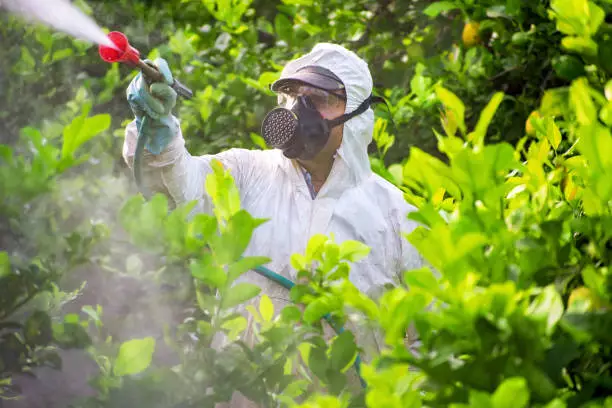
There are several ways of reviving a lemon tree that’s dropping leaves depending on the cause. Keep in mind that there are instances when lemon trees will drop leaves naturally and you may not need to do much about it. However, there is a cause for concern when your plant begins dropping considerable numbers of underdeveloped/young leaves.
Start by evaluating your plant’s growing requirements and comparing your findings with your plant’s maintenance schedule. Look out for the plant’s water needs, light conditions, nutrition, etc. In most cases, you’ll find that a deficiency or excess of either one might be the cause of leaf drop.
Here is how to revive a lemon tree that is dropping its leaves:
1. Mist your lemon trees regularly
Regular misting can help keep your lemon trees healthy especially when growing young plants indoors.
Winter months have periods of low humidity, so, routine misting can help you maintain adequate moisture levels within your space and reduce instances of leaf loss in lemon trees). You can also mist the leaves with a neem oil solution to prevent pests and fungal growth on your plant’s foliage, stems, and roots.
2. Check the plant’s temperature/light requirements
Adequate lighting is vital for fruit propagation, flowering, and general plant health. Excessive or insufficient light exposure can cause several problems including excessive leaf fall among your lemon plants.
It’s vital to ensure that your plant has adequate light exposure, duration, and intensity. Lemon trees need about 6-8 hours of continuous exposure to direct sunlight. When growing lemon trees indoors, make sure to place your plant in a place where it receives enough light.
Temperature is another environmental factor worth considering. High or low temperatures can cause leaf loss, sunburnt leaves, and additional damage that can be difficult to overcome once it occurs.
You can control the effects of temperature changes on your lemon trees by constantly misting the leaves to keep the temperatures within optimal ranges on hot days and cover up young plants during cold winter seasons.
Quality care of lemon trees can lead to the regeneration of foliage.
3. Maintain proper nutrition
Poor nutrition can cause the leaves of most plants to weaken and fall off. It’s advisable to apply nitrogen-rich fertilizer at the base of your plant to promote the growth and regeneration of foliage.
Lemon trees prefer a balanced fertilizer with a 6-6-6 NPK ratio. The trees may also require iron, calcium, and magnesium supplements to establish strong structures, healthy growth, and leaf development. Young lemon trees require annual fertilizer application just before the blooming season. You can also apply some fertilizer before the onset of the dormant period (fall and winter).
It’s best to use organic, slow-release fertilizer as it reduces the risk of nitrogen burn (in case of over-application) and the fertilizer lasts longer compared to other varieties.
4. Use well-draining soil or potting mix
It is vital to use the appropriate soil when growing lemon trees indoors and outdoors. Citrus plants require nutrient-rich, well-draining soils like sandy or loamy soils.
If possible, it is not advisable to plant lemon trees in soils with a high water retention capability because they are susceptible to overwatering and other water-related issues. When growing the plants within an indoor space, always ensure that your growing pot has a drainage hole to allow for excess water to seep out from the soil.
When trying to revive a plant with dropping leaves, consider the plant’s soil/drainage requirements.
5. Implement a regular watering schedule
Watering issues remain a common reason for leaf drops in many citrus plants. Taking care of your plant’s watering problems is very important if you want to revive its foliage.
In the case of underwatering, create a watering schedule or use watering globes that last up to 14 days to keep the plants well hydrated. Lemon trees require little water, so, lack of enough water can negatively impact their health. It is always a good idea to check if your plants need water before watering them.
Dip your finger or a small twig to a depth of about 3 inches from the base of the plant. A moisture presence means that your plant can go a few more days without water. However, if the soil is hard and brittle, you need to water the lemon tree as soon as possible to prevent and fix leaf drops.
It’s crucial to adjust your plant watering requirements based on the season and location. For example, lemon trees require more water during the warmer months of the year and lesser quantities during the cooler seasons.
Do lemon trees lose all leaves in winter?
It is unusual for lemon trees to lose all leaves during winter. While the trees might lose a significant number. of leaves, young and budding leaves often remain untouched. Excessive leaf loss during winter in lemon trees could be a sign of extreme cold or other problems affecting the plant.
Why is my lemon tree losing leaves but flowering?
It is natural for citrus fruit trees to lose some leaves during the flowering and fruit formation stage. However, the tree should not drop most of its leaves. Considerable leaf loss could indicate other factors such as temperature issues, high winds, etc.
References:
[1] The Agricultural Gazette of New South Wales, Volume 14, Lemon Trees Losing Leaves
[2] Citrus: Identifying Diseases and Disorder of Leaves and Twigs – UC IPM
